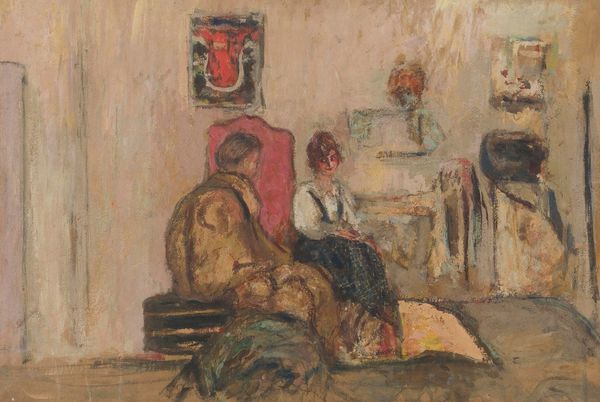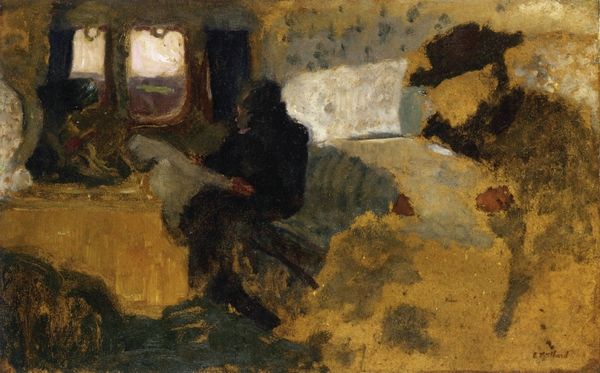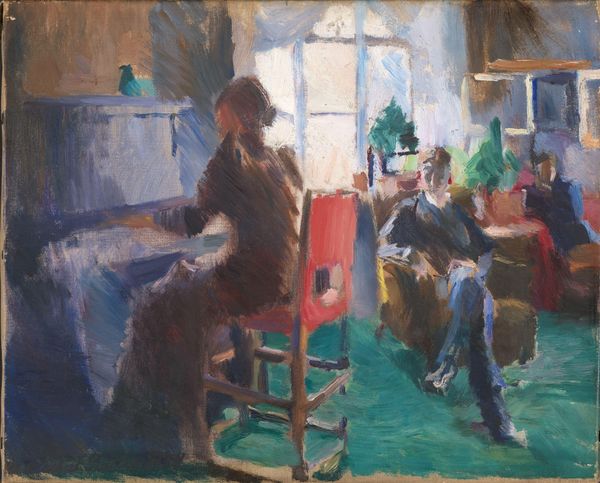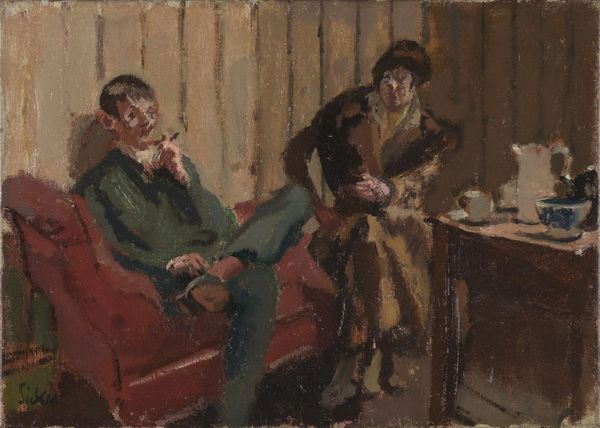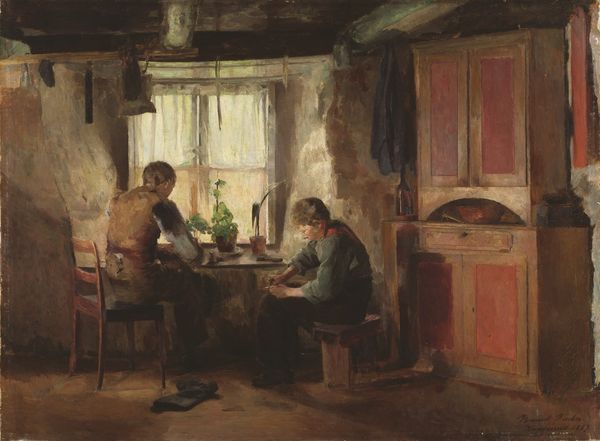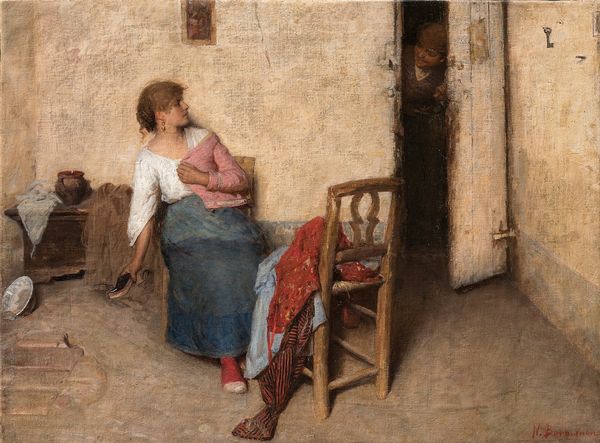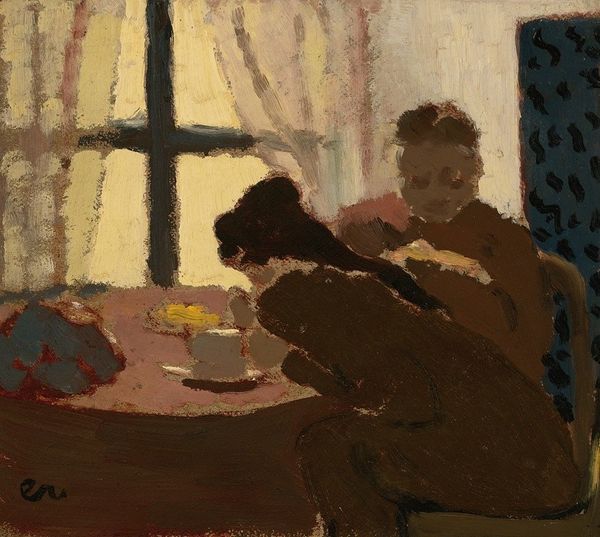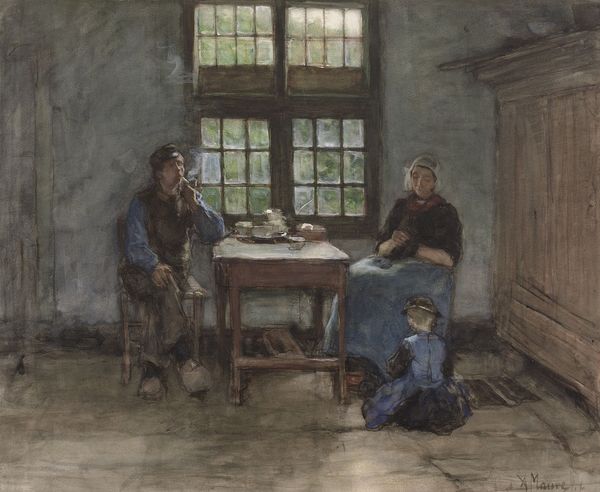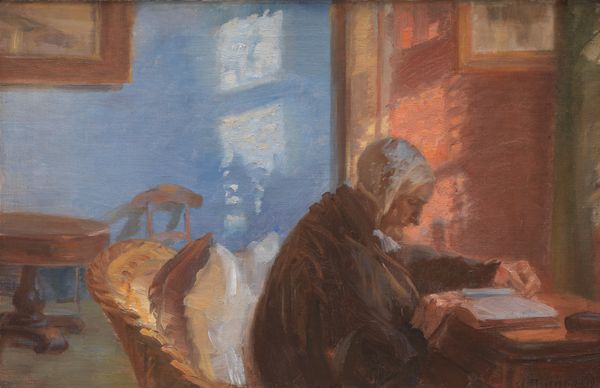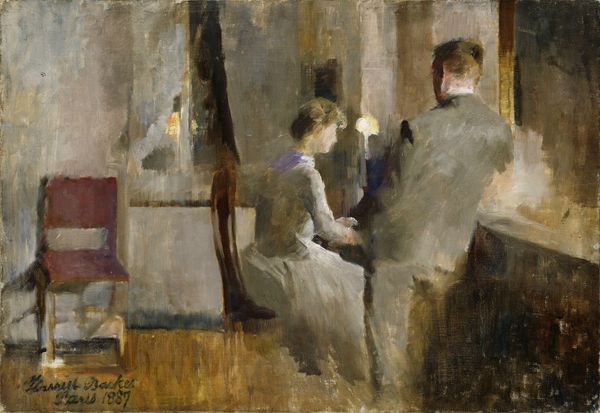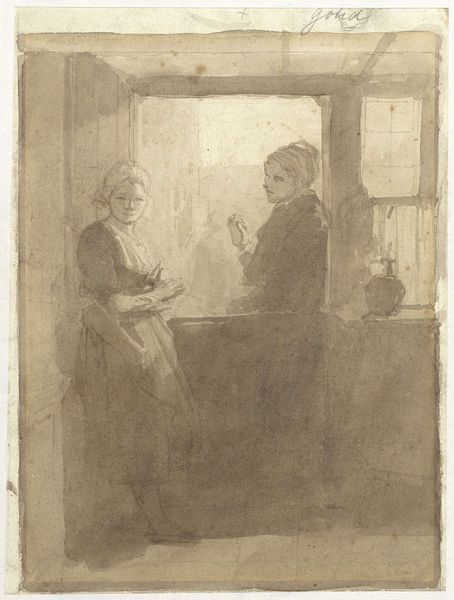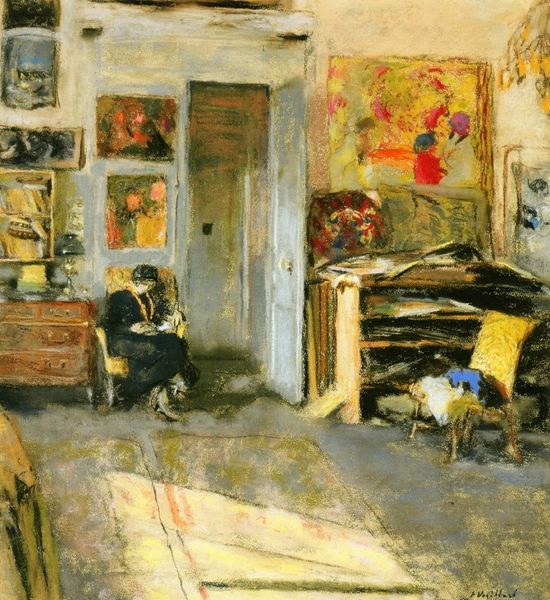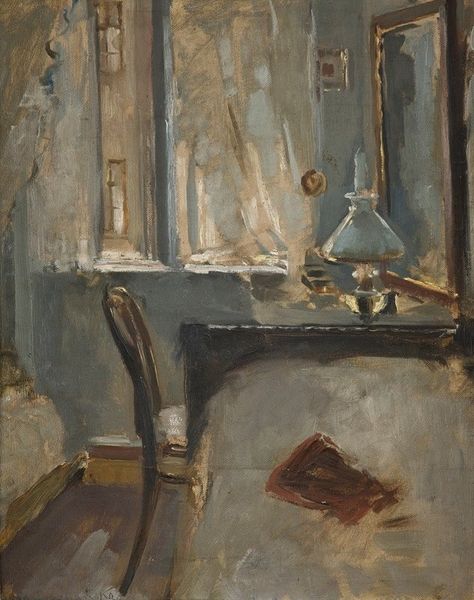
painting, oil-paint, impasto
#
portrait
#
painting
#
oil-paint
#
oil painting
#
impasto
#
intimism
#
genre-painting
#
naturalism
#
realism
Copyright: Public domain
Curator: Harriet Backer's "Farm Interior, Knabberud in Bærumm," created in 1886 with oil paint, offers an intimate glance into rural Norwegian life. What's your immediate impression? Editor: It strikes me as quite somber. The subdued palette and thick brushstrokes give the scene a heavy, almost melancholic atmosphere. You can almost feel the dampness of the room. Curator: Absolutely. The subdued palette reflects the realities of rural existence, one frequently overlooked. Note Backer's grounding in naturalism, focusing on unembellished depictions of daily life for folks at this location and moment. How does the portrayal challenge typical gender and class dynamics of the era, and what can be extracted from their dress codes, if anything at all? Editor: Looking at the figures and how they occupy the space is important. Backer has clearly prioritised materiality in this work. Notice how the texture of the walls, curtains, even the clothes on the figures are meticulously painted; and the rough quality gives a tangible feel to the working-class conditions that the occupants probably endured. The window lets in bright light, acting like an open furnace. Curator: It highlights issues surrounding not just labor conditions but the very fabric of the room; the material conditions intersect with the characters, but what story do they carry that's linked to their identity and perhaps more widespread norms or traditions in this part of Norway? Backer highlights their working position, their roles—foregrounding labor itself through these representations in paint! Editor: Indeed. Think of how Backer renders the wooden furniture – a bed probably made with a low wage and basic techniques. Its simple form underscores functionality over aesthetics, aligning with the no-frills living captured in the scene and the limited materials on offer, or indeed the artist's selection of material for painting the scene in that manner, which would influence future output... Curator: I'm glad you observed that! And while Backer remains relatively less discussed than many male artists of the era, her attention to these often overlooked corners of daily life offers us incredibly meaningful narratives concerning womanhood, labor, social reform—topics absolutely relevant today. Editor: Looking closer now, I admire how Backer draws attention to labor within a seemingly simple scene. It prompts questions about who benefits from material consumption and how working-class realities contribute unseen value into our societal ecosystem. Curator: Ultimately Backer's 'Farm Interior' acts almost like historical testimony—linking materiality, space and social reality. Editor: Precisely, a perfect synthesis indeed!
Comments
No comments
Be the first to comment and join the conversation on the ultimate creative platform.

